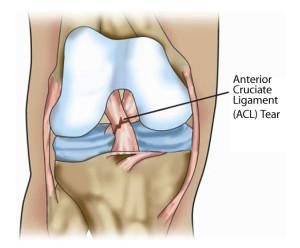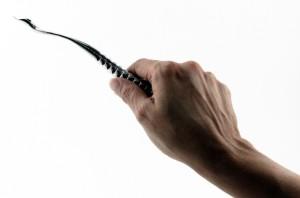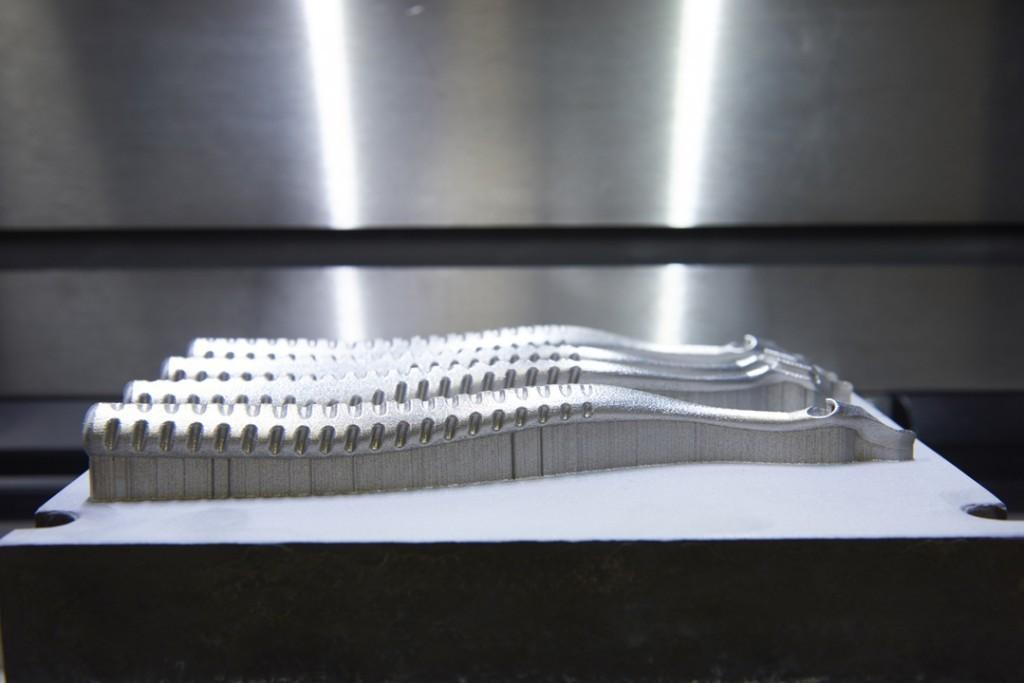Orthopedic Surgeon Develops Game-Changing 3D Printed Tool for ACL Surgeries
 “Not the ACL again.” I’ve said and heard this sentence many times as a lifelong baseball fan, whenever a vital player would be sent to the disabled list with a torn anterior cruciate ligament. One of the most important ligaments in the knee, a torn ACL is a major setback for any athlete, as it’s difficult to repair and has a good chance of re-tearing even after it’s repaired. The standard surgical method for repairing a torn ACL involves drilling a tunnel through the tibia, removing the ligament, reconstructing it with a transplanted graft, and reattaching it. The technique has a lot of limitations, however, namely that entering the knee through the tibia makes it very difficult to reattach the ligament at its original attachment point.
“Not the ACL again.” I’ve said and heard this sentence many times as a lifelong baseball fan, whenever a vital player would be sent to the disabled list with a torn anterior cruciate ligament. One of the most important ligaments in the knee, a torn ACL is a major setback for any athlete, as it’s difficult to repair and has a good chance of re-tearing even after it’s repaired. The standard surgical method for repairing a torn ACL involves drilling a tunnel through the tibia, removing the ligament, reconstructing it with a transplanted graft, and reattaching it. The technique has a lot of limitations, however, namely that entering the knee through the tibia makes it very difficult to reattach the ligament at its original attachment point.

Image: Cayenne Medical
Sounds painful, right? It is, and the graft often fails due to the inability to handle the same kind of strain as the original ligament. But Dr. Dana Piasecki, an orthopedic surgeon at OrthoCarolina Sports Medicine, may just have come up with a solution that could solve those problems and save the careers of hundreds of professional athletes with one little — 3D printed — surgical tool.
“The main problem is doctors are using a straight drill to create the tibia and femur attachment points for the graft, but instrumenting through the rigid tibial tunnel limits where you can get on the femur,” said Dr. Piasecki. “I realized I needed a procedure in which the drill is flexible and could be bent to follow the ligament’s normal path to impact the femur at the location and angle that anatomically mimics native ACL positioning. I then needed a tool that could be inserted into the inner knee space to grasp the flexible drill, steer it to the proper spot on the femur and hold it during the drilling process.”
 Manufacturing such a small, complex tool at a low cost was going to be a challenge, so Dr. Piasecki turned to 3D printing. First he hand-carved the tool from plastic until he was satisfied with its shape, then turned it over to 3D scanning company Laser Design, who scanned it and created a 3D model. The company then printed several plastic prototypes using FDM technology, but the final tool would need to be printed with a strong, biocompatible metal that could be easily modified at low cost to accommodate the varying knee sizes of patients.
Manufacturing such a small, complex tool at a low cost was going to be a challenge, so Dr. Piasecki turned to 3D printing. First he hand-carved the tool from plastic until he was satisfied with its shape, then turned it over to 3D scanning company Laser Design, who scanned it and created a 3D model. The company then printed several plastic prototypes using FDM technology, but the final tool would need to be printed with a strong, biocompatible metal that could be easily modified at low cost to accommodate the varying knee sizes of patients.
Enter Stratasys Direct Manufacturing, which used DMLS technology to manufacture the tool in Inconel 718. After some testing and modification with help from Laser Design, the Pathfinder ACL Guide, a low-cost, biocompatible, flexible metal tool, was completed, tested extensively, and finally registered with the FDA as a Class 1 Medical Device. So far, the Pathfinder has shown a 95% success rate in anchoring grafts at the location of the original ligament, which will allow them to withstand the same stress as the original ligament and greatly reduce the chances of re-tearing.
Dr. Piasecki has filed a patent for the device under the newly developed company Danamed Inc., which he began with his business partner Jim Duncan. 3D printing was about 97% cheaper than a traditional casting method would have been for manufacturing the tool, and the Pathfinder is now on the market.
“Pathfinder illustrates how 3D printing is uniquely capable of enabling breakthroughs in medical technology that otherwise would not be possible,” said John Self, project engineer at Stratasys Direct Manufacturing. “And by offering DanaMed 97 percent cost savings over conventional manufacturing methods, 3D printing has demonstrated its business value in bringing complex, high-quality parts to market.”
The Pathfinder is also yet another example of the effectiveness of metal 3D printing for medical applications. Stratasys Direct Manufacturing has almost tripled their metal 3D printing capacity in the last year and a half, after a survey showed that the use of metal 3D printing is expected to nearly double over the next three years. Let’s hear your thoughts on this story in the 3D Printing and ACL Surgery forum on 3DPB.com.
Subscribe to Our Email Newsletter
Stay up-to-date on all the latest news from the 3D printing industry and receive information and offers from third party vendors.
Print Services
You May Also Like
RAPID 2025: Stratasys & trinckle Announce Strategic Software Partnership
News continues to flood in from last week’s RAPID+TCT 2025, including a new partnership between AM market leader Stratasys and Berlin-based software company trinckle. By automating important steps in fixture...
RAPID TCT 2025: Spring in the Paris of the Midwest
I’m going to go out on a limb here and say that whomever coined the phrase Detroit: Paris of the Midwest, had not spent a lot of time in Paris...
3D Printing Financials: 3D Systems Looks to Bounce Back in 2025
After a challenging year for the industry, 3D Systems (NYSE: DDD) ended 2024 with results pointing to a reset, laying the groundwork for future profitability. The company didn’t post strong...
Printing Money Episode 27: Q4 2024 Public 3D Printing Earnings Review with Troy Jensen, Cantor Fitzgerald
Q2 2025 has already begun, but public markets reporting has only just finished with Q4 2024. To tie a bow on Q4 2024, we are thankful to have Troy Jensen...



























